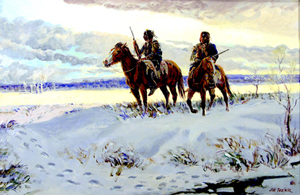 The Great Plains are an expanse of flatlands that lie west of the Mississippi River and east of the Rocky Mountains. The northeastern and eastern parts of New Mexico are covered by the Great Plains and today are used for cattle and sheep ranching, and other agricultural purposes. In earlier times, the Great Plains of New Mexico were buffalo hunting grounds, as these animals grazed upon and migrated through the land. Much of the land is covered by prairie and grasslands, which support many types of wildlife in the state.
The Great Plains are an expanse of flatlands that lie west of the Mississippi River and east of the Rocky Mountains. The northeastern and eastern parts of New Mexico are covered by the Great Plains and today are used for cattle and sheep ranching, and other agricultural purposes. In earlier times, the Great Plains of New Mexico were buffalo hunting grounds, as these animals grazed upon and migrated through the land. Much of the land is covered by prairie and grasslands, which support many types of wildlife in the state.
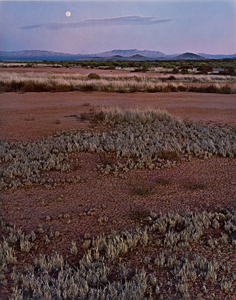 The eastern plains run along the Texas border and are known as the High Plains. The Great Plains include parts Colorado, Kansas, Montana, Nebraska, New Mexico, North Dakota, Oklahoma, and South Dakota. Texas, Wyoming, and include the Canadian provinces of Alberta, Manitoba, and Saskatchewan. The Plains Indians of the United States occupied much of the land we now call the Great Plains.
The eastern plains run along the Texas border and are known as the High Plains. The Great Plains include parts Colorado, Kansas, Montana, Nebraska, New Mexico, North Dakota, Oklahoma, and South Dakota. Texas, Wyoming, and include the Canadian provinces of Alberta, Manitoba, and Saskatchewan. The Plains Indians of the United States occupied much of the land we now call the Great Plains.
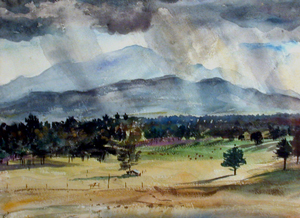 The eastern third of New Mexico is covered by the Great Plains. The Great Plains run from a high plateau in the north south to the Pecos River. Rivers in the high plateau have cut deep canyons into the landscape. This area is used for sheep and cattle ranches. To the south, dry farming and irrigated agriculture is possible. South of the Canadian River, along the eastern edge of New Mexico, the land is referred to as the High Plains or Staked Plains (Llano Estacado). These High Plains run along the Texas border in New Mexico and include the following five counties:
The eastern third of New Mexico is covered by the Great Plains. The Great Plains run from a high plateau in the north south to the Pecos River. Rivers in the high plateau have cut deep canyons into the landscape. This area is used for sheep and cattle ranches. To the south, dry farming and irrigated agriculture is possible. South of the Canadian River, along the eastern edge of New Mexico, the land is referred to as the High Plains or Staked Plains (Llano Estacado). These High Plains run along the Texas border in New Mexico and include the following five counties:
• Union County and the town of Clayton,
• Quay County and Tucumcari,
• Curry County and the town of Clovis,
• Roswell County and the city of Roswell, and.
• Lea County and the cities of Tatum, Lovington (the county seat), Hobbs, Eunice, and Jal.
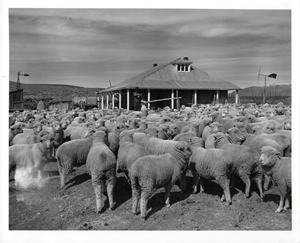 It was not easy for early European settlers to adjust to the Great Plains. Unlike the East, there were few trees to build shelter, and water was scarce. Summer and winter winds were harsh on the open lands, as were the seasonal temperatures. Dust was also a problem, because there were few grasses, trees, or crops to keep the soil intact on the plains. Gramma, buffalo, and wheat grasses are popular varieties that do grow well, and these served as the primary foods for cattle, sheep and buffalo in New Mexico.
It was not easy for early European settlers to adjust to the Great Plains. Unlike the East, there were few trees to build shelter, and water was scarce. Summer and winter winds were harsh on the open lands, as were the seasonal temperatures. Dust was also a problem, because there were few grasses, trees, or crops to keep the soil intact on the plains. Gramma, buffalo, and wheat grasses are popular varieties that do grow well, and these served as the primary foods for cattle, sheep and buffalo in New Mexico.
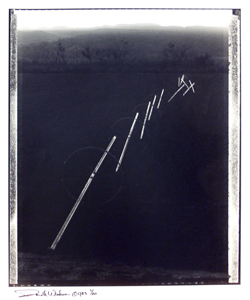 Later, innovations would help make life on the plains easier: barbed wire that replaced wooden; windmills that pumped water from deep within the ground; railroads that brought wood from the east to build houses; and farm machinery, such as the steel plow that was introduced by John Deere in 1882, to make it much easier to work the land and produce crops.
Later, innovations would help make life on the plains easier: barbed wire that replaced wooden; windmills that pumped water from deep within the ground; railroads that brought wood from the east to build houses; and farm machinery, such as the steel plow that was introduced by John Deere in 1882, to make it much easier to work the land and produce crops.
The Plains Indians in the New Mexico region, mainly the Comanche, established themselves on the outskirts of the Llano Estacado (or Staked Plains), which extended from western Oklahoma across the Texas Panhandle into New Mexico.
For information about the flora and fauna of the Great Plains visit» www.gpnc.org/floraof.htm
